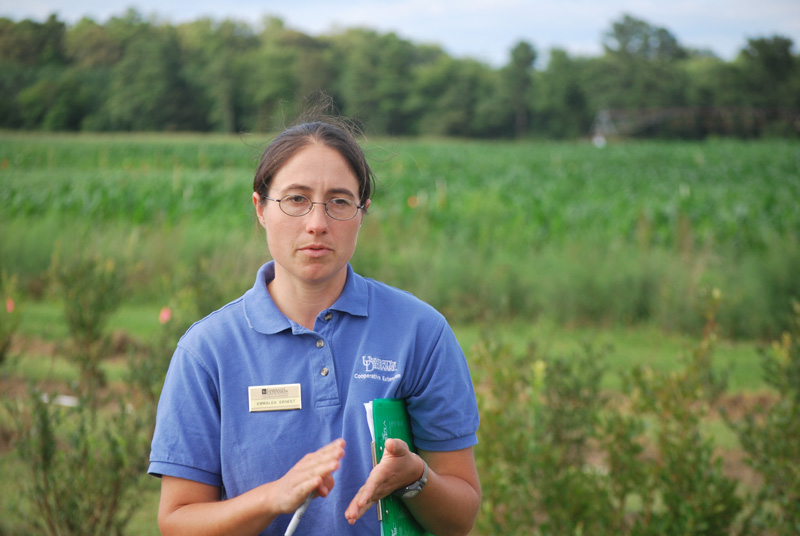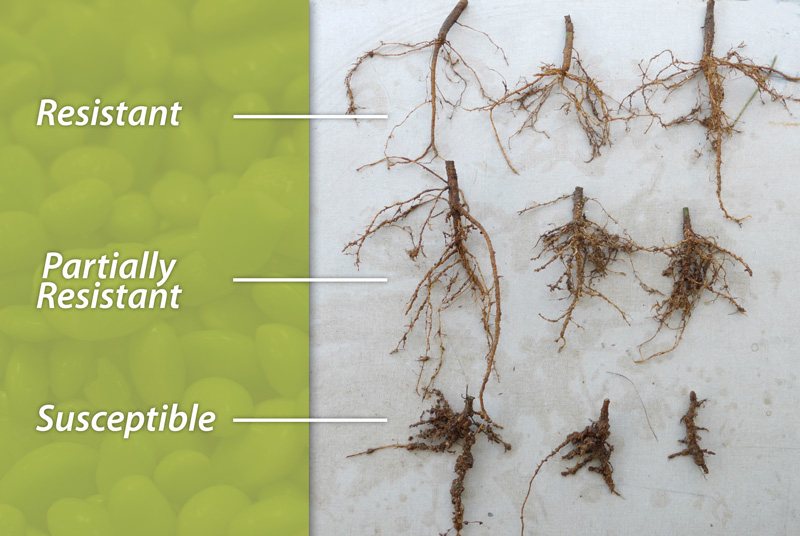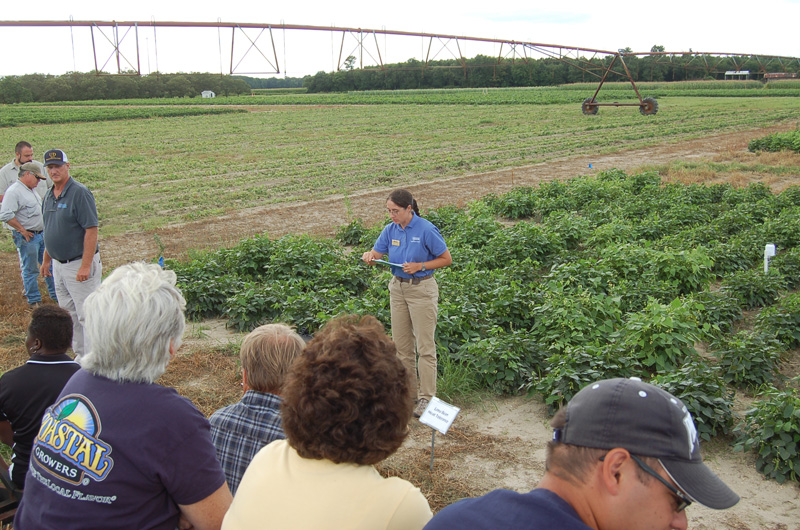

Lima bean lines
Photos by Michele Walfred March 27, 2017
UD’s Emmalea Ernest uses lima bean breeding program to develop disease resistant lines
Creating a lima bean with built-in disease resistance to root knot nematodes — parasitic worms that cause crop damage — takes a lot of patience and time, requiring years of breeding and the careful identification of sources of nematode resistance.
Luckily for growers in the state, University of Delaware Cooperative Extension has a lima bean breeding program under the guidance of Emmalea Ernest, who began the program in 2004 to develop new varieties of lima beans that possess disease resistance and are well adapted to Delaware’s growing conditions and production practices.
Lima beans are Delaware’s most widely planted vegetable crop with approximately 14,000 acres of green baby limas for processing planted in the state each year. Fordhook and large seeded pole limas are also grown in Delaware.
I made crosses between the best sources of resistance from the California program and varieties that are suitable for production here
Associate Scientist, College of Agriculture & Natural Resources
Root knot nematodes
To look at nematode resistance specifically, Ernest, associate scientist in the Extension Vegetable and Fruit Program and in the College of Agriculture and Natural Resources Department of Plant and Soil Sciences, is part of a team of researchers that received a five-year, $1.5 million U.S. Department of Agriculture (USDA) Specialty Crop Research Initiative grant (SCRI).
Some of those funds were used for Ernest to work with Paul Gepts from the University of California Davis to look at lima bean lines that had been successful against nematodes in that state.
Ernest said that unlike the Mid-Atlantic region, where nematodes are a relatively new problem, California has a long-standing breeding program working with nematode resistance.
“They have a decades-long program, since the 1940s, because nematodes are a major problem and have been a major production issue in California. Breeding for nematode resistance in lima beans has been a big focus of the California program,” said Ernest.
California lima beans
The researchers couldn’t simply take the lima beans from California with resistance and plant them in Delaware, however, as they are not suitable for production here.
“We can’t just use those varieties because they are white seeded and meant for harvest at the dry stage, and all of our production is of green seeded lima beans for freezing,” said Ernest.
The goal for this part of the project was to identify sources of nematode resistance that could be used in the Delaware breeding program and then to start using them.
Because of the years of lima bean breeding in California, there are a lot of potential sources of resistance to root knot nematode in lima bean germplasm, which Ernest said means there are a lot of potential parents that can be used to develop resistance in Delaware lima beans.
“I made crosses between the best sources of resistance from the California program and varieties that are suitable for production here,” she said.
Line screenings
Ernest screened inbred lines in 2014 and 2015, some of which were from Gepts and the California breeding program and others that were varieties that had reported nematode resistance.
Those were screened in inoculated field plots at the Thurman G. Adams Agricultural Research Farm in Georgetown, and ratings were taken on galling — abnormal outgrowths of plant tissues. The researchers found that there were two different sources of resistance that held up well against the Delaware root knot nematodes that were being tested.
In 2016, the researchers screened breeding populations in inoculated small plots and made selections out of the 401 planted individuals.
“Those were at a stage of being either four or five generations after the cross. With lima beans, the variety that is the end product is an inbred line and so once I get to seven or eight generations of inbreeding, seven or eight generations after the cross, that is considered pretty close to an inbred line and that’s a finished variety if it’s any good,” said Ernest.
Right now, the researchers are at the sixth or seventh generation and Ernest said she is “increasing seed to have plants in the field this coming summer to look at yield and commercially important seed characteristics in some of those selections that I made out of the field last year. The best lines that we identify this summer, we’ll be testing in the replicated yield trial in 2018.”
Ernest said that the ultimate goal is to identify nematode resistant germplasm to develop new varieties that growers could use in Delaware, adding that the researchers are very close.
“We have found some sources of resistance that work well that will give us resistance to the root knot nematodes, and we have crossed those sources of resistance with things that are adapted and have the commercial qualities that we need, like green seed, and high yields. We are pretty close to maybe having something that could become a variety that’s resistant and has green seed acceptable yield and good agronomic qualities,” she said.
Contact Us
Have a UDaily story idea?
Contact us at ocm@udel.edu
Members of the press
Contact us at 302-831-NEWS or visit the Media Relations website




